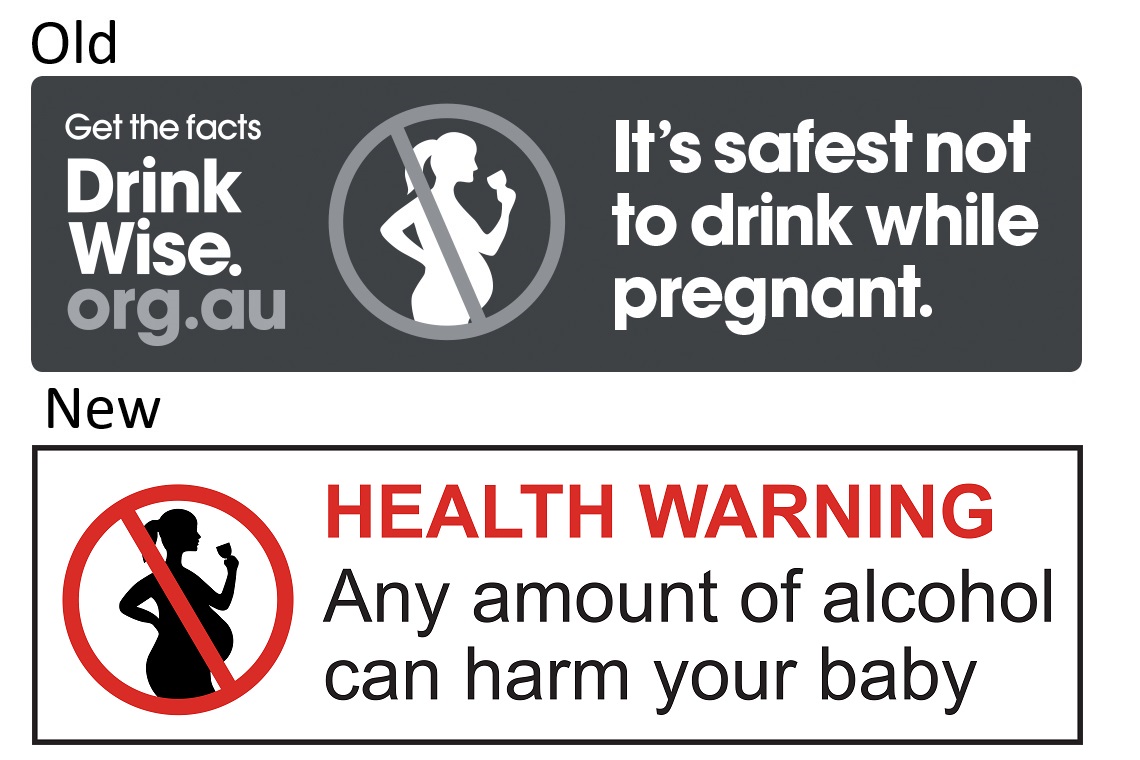Andrew Wilsmore, the CEO of Alcohol Beverages Australia (ABA), discusses the cost that will likely be incurred if mandatory pregnancy labelling goes ahead.
The problem with common-sense is that it is not that common. The proposed mandatory pregnancy warning label was released by Food Standards Australia and New Zealand (FSANZ) on Friday 4 October and it has all the hallmarks of looking for a fix to a problem that’s not really there.
FSANZ gave a three-week window to respond to the proposal, and unless you have been part of the process, or watching it closely, it’s largely been under the radar.
Mandatory pregnancy labelling is not opposed by industry – DrinkWise has a voluntary labelling scheme which ensures most alcohol products in shoppers’ baskets already bear the voluntary labelling pictogram.
From the very start of the process, industry advocated for this current labelling initiative to become mandatory. The high uptake of the current pregnancy warning label by manufacturers is testament to the commitment industry has to reducing harm associated with Fetal Alcohol Spectrum Disorder (FASD).
The reasons for this plea to adopt the voluntary labelling scheme was two-fold:
- To minimise excessive costs to industry (and thus potentially to consumers).
- Because awareness of the potential harm of alcohol for pregnant women is already at very high levels in the community.
According to data from the Australian Institute of Health and Welfare, 98.8 per cent of women either abstain or reduce their alcohol consumption when pregnant (up from 96.6 per cent in 2004), indicating high levels of awareness of alcohol harm to the unborn child.
Current and proposed labelling
The pictures featured show the differences in the approach – the most significant changes are to the copy, with ‘HEALTH WARNING’ in red, plus the quote ‘Any amount of alcohol can harm your baby’. These changes are likely to cause alcohol manufacturers and importers to incur substantial costs to comply with the label changes – even for large manufacturers with the addition of an extra colour, as well as for smaller distillers, brewers and winemakers.
These costs have been estimated by PricewaterhouseCoopers to be from $10k up to $16.5k per Stock Keeping Unit (SKU)*, which is substantially more than what the Food Secretariat estimated it to be.
At approximately 60,000 SKUs in Australia, that equates to $600 million – costs (based on the lower figure) that are likely to be passed on to the consumer as they are too much for the industry to absorb alone.
Labelling alone does not change consumer behaviour
Research shows that labelling alone does not change consumer behaviour. This was acknowledged by FSANZ (ANZFA as it was known then) in 2001 in Rejection of Application A359 – Requiring Labelling of Alcoholic Beverages with a Warning Statement. That rejection is as follows:
- Scientific evidence for the effectiveness of warning statements on alcoholic beverages shows that while warning labels may increase awareness, the increased awareness does not necessarily lead to the desired behavioural changes in at risk groups. In fact, there is considerable scientific evidence that warning statements may result in an increase in the undesirable behaviour in ‘at risk’ groups.
The industry would much rather see the development of targeted education programmes to those people ‘at risk’ of drinking alcohol while pregnant. Think what could be achieved with even half of $600 million.
Finally, the cost/benefit analysis done by FSANZ in justification of this label change fails to account for the efficacy of labelling in curbing choice/behaviour. It assumes labelling is a cure for FASD which is in direct contradiction to their previous stance on this issue.
Call to action
All is not lost. Despite the close off date of written submission, we urge you to make representations to Federal and State Government Ministers to ensure a common-sense approach to the mandatory labelling is adopted. The relevant ministers to contact can be found on the Australian and New Zealand Ministerial Forum on Food Regulation website. If you need help with your representations, contact your relevant industry associations.
*A PricewaterhouseCoopers report for FSANZ in 2008 identified an approximate average cost of $9k-10k for a medium or major label change on glass bottles or aluminium. Recent consultation with ABA members puts the introduction of the type of pregnancy warning label currently being contemplated by FSANZ at $16.8k per SKU.

